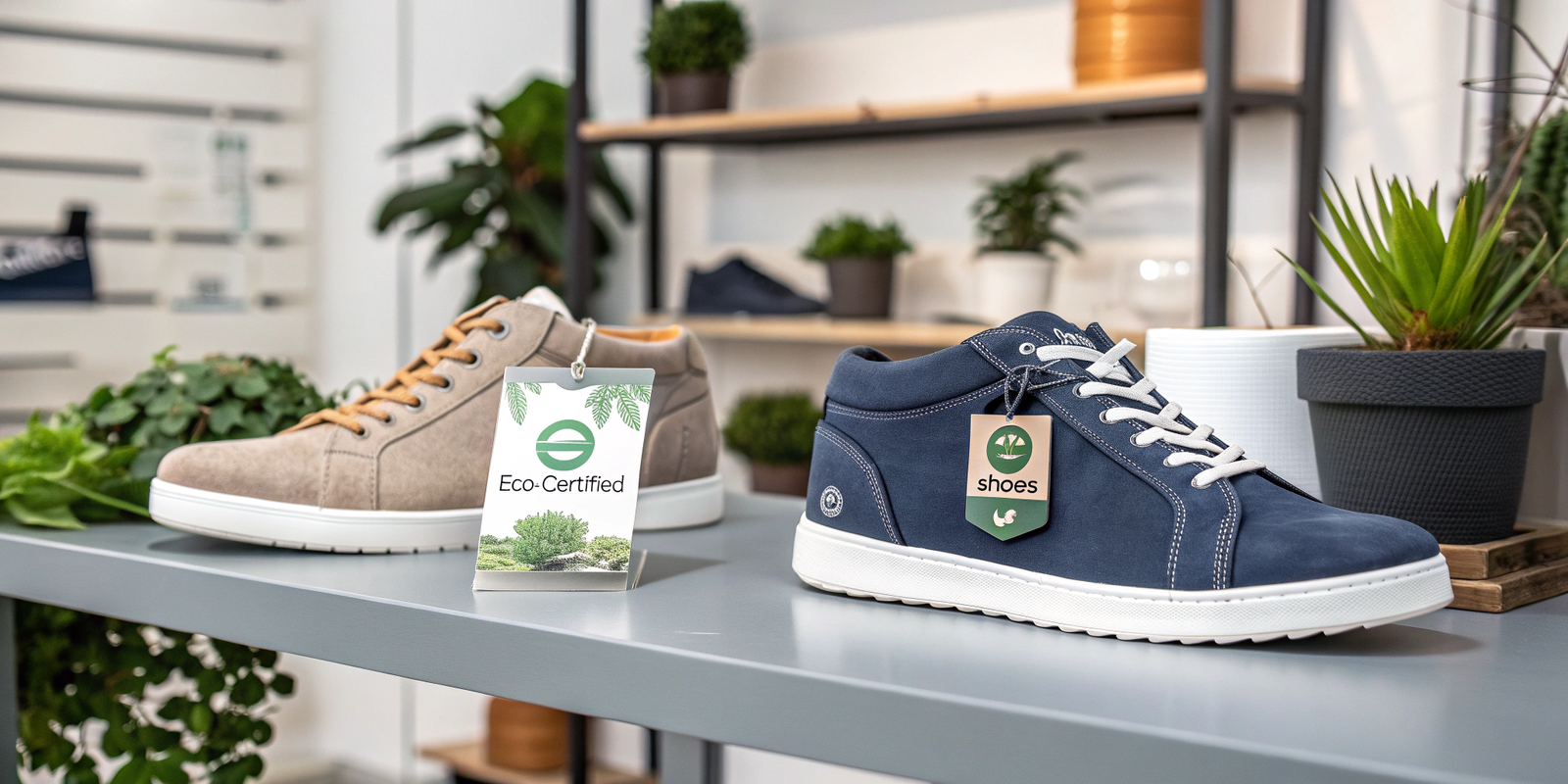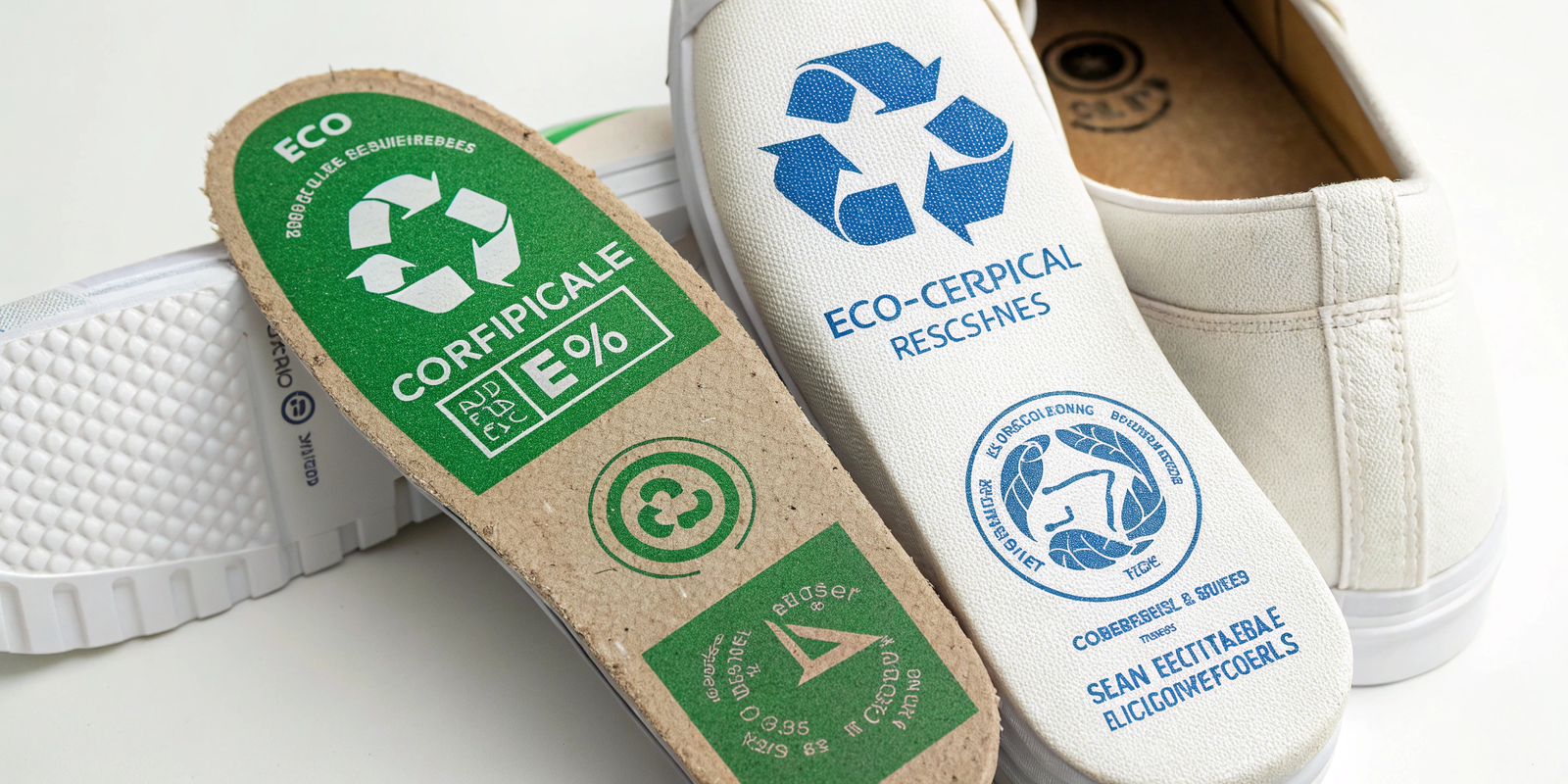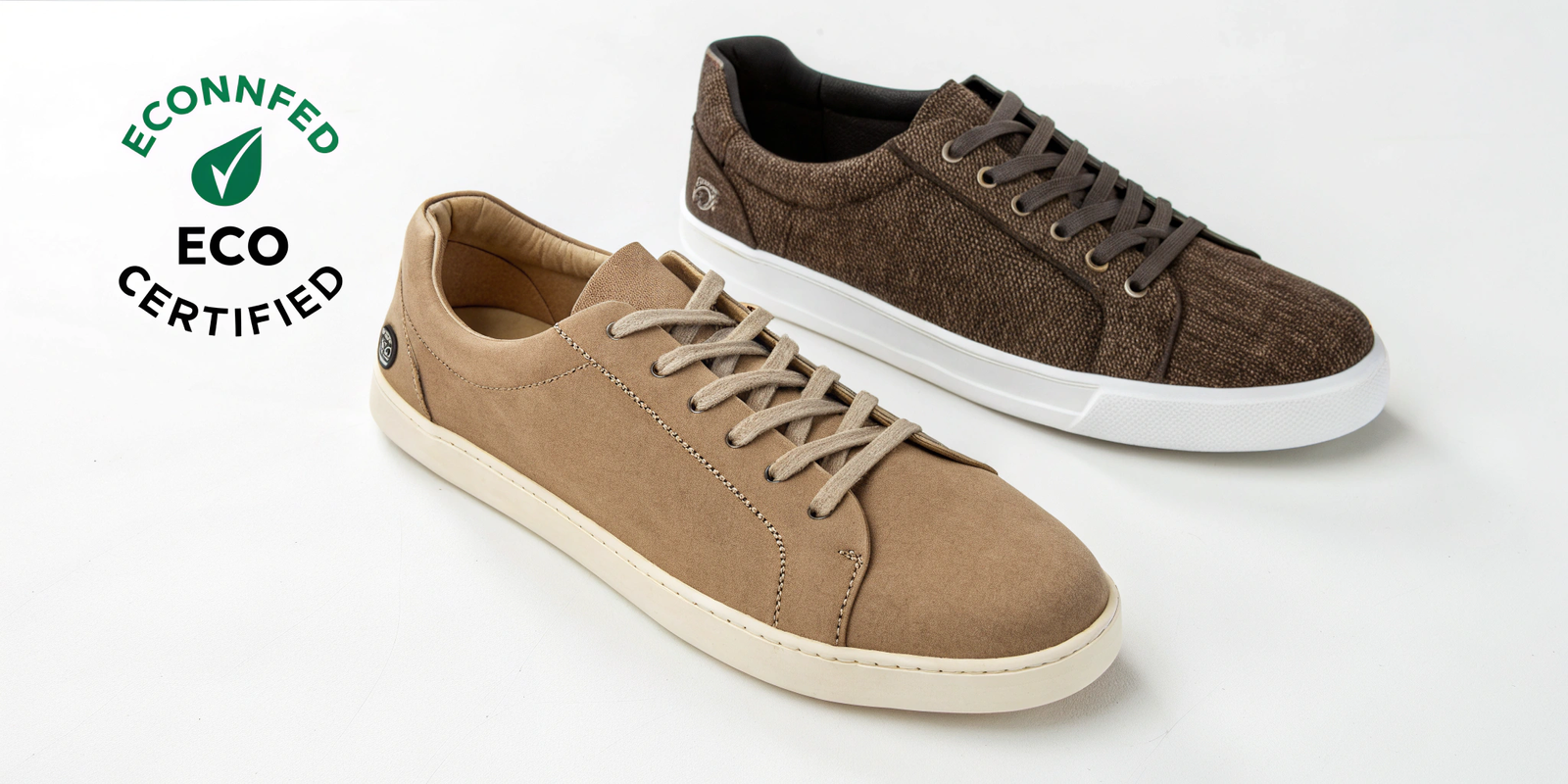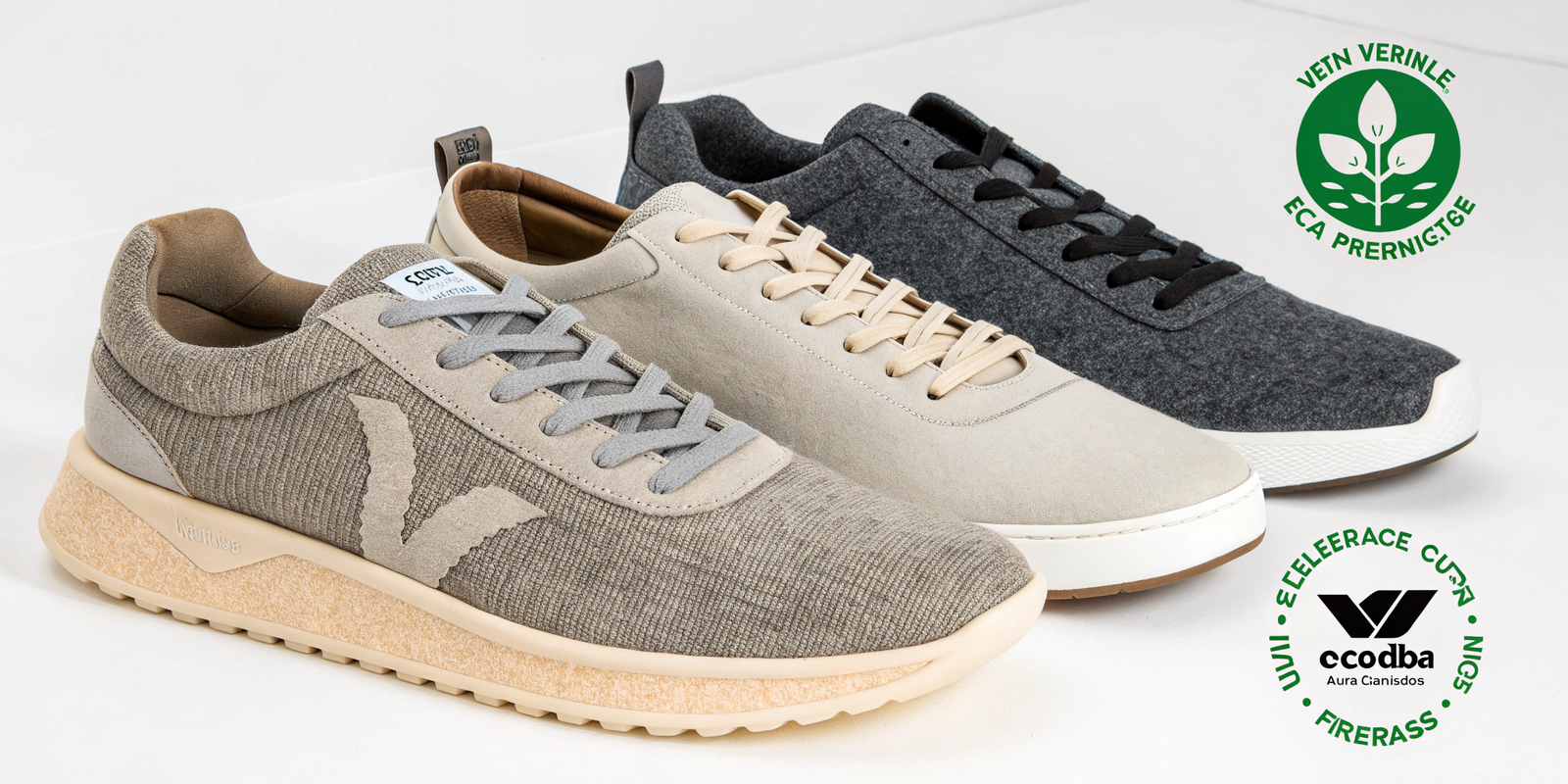Problem: As a consumer, you want to make responsible choices, but the world of eco-certifications on footwear labels can be confusing. Agitation: It's hard to tell if a "green" label is truly meaningful or just clever marketing, leaving you unsure if your sustainable purchase is actually making a difference. Solution: Let's cut through the jargon and explore what eco-certifications in footwear really mean, helping you understand their significance and empowering you to make genuinely informed decisions about your shoes.
Eco-certifications in footwear are independent, third-party verifications that a product or its manufacturing process meets specific environmental and social sustainability standards. These certifications assess various aspects, including material sourcing, chemical use, water and energy consumption, waste management, and fair labor practices, providing consumers with a trusted indicator of a shoe's environmental and ethical footprint. They go beyond simple claims, offering transparency and accountability from raw material to finished product.
 In my 25 years in the shoe industry, I've seen the rise of various standards and labels. At Lucas, we understand the importance of clear, verifiable claims. Navigating these certifications, ensuring our factories meet standards like BSCI and SEDEX, is crucial for building trust with our partners and striving towards more sustainable practices.
In my 25 years in the shoe industry, I've seen the rise of various standards and labels. At Lucas, we understand the importance of clear, verifiable claims. Navigating these certifications, ensuring our factories meet standards like BSCI and SEDEX, is crucial for building trust with our partners and striving towards more sustainable practices.
What Are Eco-Certifications in Footwear? Problem: Footwear brands are increasingly using terms like "eco-friendly," "sustainable," or "green" on their products, but without a clear framework, these claims can feel vague or even misleading. Agitation: How can a consumer genuinely determine if a shoe is environmentally responsible when there's no universal standard, and what do all those different logos really signify? Solution: Let's define what eco-certifications in footwear truly are, delve into their purpose, and explain how they provide a credible and transparent system for evaluating a shoe's environmental and social performance.
Eco-certifications in footwear are voluntary labels or marks issued by third-party organizations that independently verify a product's compliance with a predetermined set of environmental and ethical standards. These standards cover the entire lifecycle of a shoe, from the sustainable sourcing of raw materials, responsible manufacturing processes (energy, water, chemical use, waste), to fair labor practices and product recyclability. They aim to provide consumers with trustworthy information, combat greenwashing, and drive industry-wide adoption of more sustainable practices, ensuring accountability beyond mere marketing claims.

We at Lucas work with BSCI and SEDEX certified factories. I know firsthand the effort involved in meeting these external standards. It's not just about a label; it's about systemic changes in operations and a commitment to continuous improvement.
What is the purpose of eco-certifications?
- Provide Credibility and Trust: In a market full of "green" claims, certifications offer independent verification. This helps consumers trust that a product meets certain environmental or social criteria.
- Combat Greenwashing: Many companies make vague environmental claims without real substance. Certifications provide clear, measurable standards. This helps to prevent misleading marketing.
- Drive Industry Improvement: To earn a certification, companies must adapt their processes. This pushes the entire supply chain to adopt more sustainable practices.
- Offer Transparency: Certifications typically require documentation and auditing. This provides transparency about how a product is made and its environmental impact.
- Inform Consumer Choices: For consumers, certifications act as a shortcut. They quickly identify products that align with their values.
What aspects do eco-certifications cover?
Eco-certifications can be very broad or highly specific, focusing on different stages of a shoe's lifecycle or particular attributes:
- Materials Sourcing:
- Organic Content: Ensures textiles like cotton are grown without harmful pesticides or synthetic fertilizers. (e.g., GOTS - Global Organic Textile Standard).
- Recycled Content: Verifies the percentage of recycled materials used in a product. (e.g., GRS - Global Recycled Standard).
- Sustainable Leather: Addresses responsible tanning processes, traceability, and ethical animal welfare. (e.g., Leather Working Group - LWG).
- Responsible Forest Management: For materials like natural rubber derived from trees, ensuring sustainable forest practices. (e.g., FSC - Forest Stewardship Council).
- Manufacturing Processes:
- Chemical Management: Restricts or bans hazardous chemicals in dyeing, finishing, and bonding. (e.g., bluesign®, OEKO-TEX®).
- Water and Energy Efficiency: Sets standards for reducing water consumption and energy use, often promoting renewable energy sources.
- Waste Management: Focuses on minimizing waste, increasing recycling, and proper disposal of by-products.
- Air Emissions: Limits pollutants released into the atmosphere.
- Social Aspects (Ethical Labor):
- Fair Labor Practices: Ensures safe working conditions, fair wages, no child labor, and freedom of association. (e.g., Fair Trade Certified, SA8000, BSCI, SEDEX). While not strictly "eco," these are often intertwined with sustainability as part of a holistic approach.
- Product End-of-Life:
- Biodegradability/Compostability: For materials that can break down naturally.
- Recyclability: Designing products for easy disassembly and recycling.
Who issues these certifications?
Certifications are issued by independent, non-profit organizations or consortia. Examples include:
| Certification Body/Standard | Primary Focus | What it Certifies (Examples in Footwear Context) |
|---|---|---|
| GOTS (Global Organic Textile Standard) | Organic Fibers & Processing Methods | Cotton, linen, or wool used in shoe uppers or linings are organic and processed responsibly. |
| GRS (Global Recycled Standard) | Recycled Content & Supply Chain Traceability | Footwear components made from recycled polyester, nylon, rubber, verifying minimum recycled content. |
| LWG (Leather Working Group) | Environmental Performance in Leather Manufacturing | Tanneries that process leather with reduced water, energy, and chemical impact, and good waste management. |
| bluesign® | Chemical Management & Environmental Performance | Textile mills and component suppliers using safe chemicals and sustainable production processes for shoe materials. |
| OEKO-TEX® Standard 100 | Absence of Harmful Substances in Textiles | Finished shoe materials (textiles, synthetics) are tested and free from harmful levels of known toxic substances. |
| FSC (Forest Stewardship Council) | Responsible Forest Management | Natural rubber or wood-based materials (e.g., TENCEL™ Lyocell) come from sustainably managed forests. |
| Fair Trade Certified | Ethical Sourcing & Fair Labor | Specific materials (like cotton) or entire products are produced under fair labor conditions with fair wages. |
| B Corporation (B Corp) | Holistic Social & Environmental Performance | The entire company meets rigorous standards of social and environmental performance, accountability, and transparency. |
| BCSI/SEDEX | Ethical Trade & Responsible Supply Chains (Social) | Factories where shoes are assembled adhere to good labor practices, health & safety, and ethical conduct. |
In essence, eco-certifications are critical tools. They help both industry and consumers navigate the complexities of sustainability. They transform vague claims into verifiable realities.
Are Eco-Certified Shoes More Expensive Than Regular Shoes? Problem: You're convinced that eco-certified shoes are the way to go, but a nagging concern is the price. Agitation: Is buying sustainably always going to break the bank, making ethical choices inaccessible to the average consumer, or is there a way to balance values with budget? Solution: Let's tackle the perceived cost difference between eco-certified and regular shoes, exploring the factors that influence pricing and assessing whether sustainability is an affordability trade-off.
Eco-certified shoes are often, but not always, more expensive than their conventional counterparts due to higher costs associated with ethical material sourcing, advanced clean manufacturing processes, rigorous auditing for certification, and fair labor practices. These added investments ensure greater transparency, reduced environmental harm, and improved social conditions throughout the supply chain. However, as demand for sustainable products grows and technologies become more efficient, the price gap is gradually narrowing, making eco-friendly options increasingly accessible.

At Lucas, when we implement new, more sustainable materials or processes, there's often an initial cost increase. But we also see long-term benefits in terms of efficiency, worker safety, and brand reputation. It's a balance we constantly work to manage to provide quality products.
Why might eco-certified shoes be more expensive?
Several factors contribute to the potentially higher price point of eco-certified footwear:
- Higher Cost of Sustainable Materials:
- Organic Fibers: Growing organic cotton, for example, often has lower yields and requires more manual labor than conventional cotton due to the absence of synthetic pesticides and fertilizers.
- Recycled Materials: Collecting, sorting, and processing waste materials into usable, high-quality fibers or compounds can be technologically intensive and more expensive than using virgin resources.
- Bio-based Materials: Developing and scaling up production of innovative materials like mushroom leather or algae-based foams often involves significant R&D investment and specialized manufacturing processes that are not yet at mass market scale.
- Ethical Leather: Leather from tanneries certified by the Leather Working Group (LWG) often costs more. This is because they use fewer harsh chemicals. They also manage water and waste more responsibly.
- More Expensive Manufacturing Processes:
- Reduced Chemical Use: Using safer, non-toxic dyes and glues can be more expensive than conventional, harsher chemicals.
- Water and Energy Efficiency: Investing in machinery and processes that reduce water and energy consumption (e.g., closed-loop systems, renewable energy) requires significant capital investment.
- Waste Management: Proper management of waste, including recycling and safe disposal of by-products, adds costs.
- Certification and Auditing Costs: Brands pay fees to certification bodies for audits, inspections, laboratory testing, and the right to use the certification label. These processes are rigorous and ensure compliance, but they are not free.
- Fair Labor Practices: Paying fair wages, ensuring safe working conditions, and providing worker benefits (as often required by social certifications like Fair Trade or SA8000) contribute to higher production costs compared to exploiting cheap labor in unregulated environments.
- Smaller Scale Production: Many truly sustainable brands operate on a smaller scale. They do not have the same economies of scale as large, conventional footwear companies. This means higher per-unit costs.
- Research and Development (R&D): Many sustainable brands invest heavily in GRS to innovate new materials and processes. This cost is often passed on to the consumer.
Is the price gap narrowing?
Yes, there's a definite trend towards narrowing the price gap, driven by several factors:
- Increased Demand: As more consumers prioritize sustainability, the demand for eco-certified shoes grows. This encourages more brands to enter the market. Increased competition can help drive prices down.
- Technological Advancements: Innovation in material science and clean manufacturing processes is making sustainable production more efficient and cost-effective over time.
- Economies of Scale: As sustainable materials and processes become more widespread, their production scales up, leading to lower per-unit costs for suppliers.
- Government Incentives: Some governments offer subsidies or incentives for sustainable manufacturing, which can help offset costs for brands.
- Long-Term Value: While the initial cost might be higher, many eco-certified shoes are designed for durability and longevity, potentially offering better long-term value than cheaper, less durable conventional options. They may also be easier to care for or repair.
Ultimately, consumers are paying not just for the shoe itself but for transparency, ethical production, and a reduced environmental footprint. While there can be a premium, the market is evolving, making sustainable choices more accessible.
Cost Comparison: Eco-Certified vs. Conventional Footwear
| Cost Factor | Conventional Footwear (Typical) | Eco-Certified Footwear (Typical) | Impact on Price |
|---|---|---|---|
| Material Sourcing | Often cheapest available, virgin materials, less transparency. | Higher cost for organic, recycled, or bio-based materials; higher quality, ethical sourcing, transparent supply chains. | Higher for Eco-Certified: Sustainable materials often have higher production/collection costs. |
| Manufacturing Processes | Focus on efficiency and low cost; less emphasis on environmental impact. | Investment in cleaner technologies (e.g., water recycling, fewer chemicals); energy efficiency; proper waste management. | Higher for Eco-Certified: Requires capital investment and stricter oversight. |
| Labor Costs | Potentially lower wages, less oversight of working conditions. | Fair wages, safe working conditions, benefits; adherence to social responsibility standards (e.g., BSCI, SEDEX). | Higher for Eco-Certified: Ethical labor adds to production overhead. |
| Certification/Auditing | Generally no external certification costs for "regular" products. | Fees for third-party audits, testing, and use of certification labels (e.g., GOTS, LWG, B Corp). | Higher for Eco-Certified: Certification processes add direct costs. |
| R&D and Innovation | Varies, but often less focus on material sustainability innovation. | Significant investment in R&D for new sustainable materials, circular design, and process improvements. | Higher for Eco-Certified: Innovation costs are embedded in product price. |
| Economies of Scale | Large-scale production, very efficient per-unit cost. | Often smaller production runs initially; less ability to leverage massive scale, though this is improving. | Potentially Higher for Eco-Certified: Small scale can increase per-unit costs. |
| Consumer Perception/Value | Price is often the primary driver. | Consumers willing to pay more for transparency, ethical production, reduced environmental footprint, and often better durability. | Justifies Higher Price: Emotional and ethical value adds to perceived worth. |
Which Brands Consistently Use Certified Eco-Friendly Materials? Problem: You're ready to put your money where your values are, but it's hard to distinguish genuinely sustainable brands from those that only make token gestures towards eco-friendliness. Agitation: Who are the true leaders consistently integrating certified eco-friendly materials into their footwear, and where can you find shoes that genuinely align with your commitment to the planet? Solution: Let's spotlight brands that are consistently committed to using certified eco-friendly materials, showcasing their dedication to verifiable sustainability throughout their product lines.
Leading brands consistently using certified eco-friendly materials include Allbirds, known for their extensive use of natural, renewable materials like Merino wool, TENCEL™ Lyocell, and sugarcane-based EVA, all from verified sustainable sources. Veja stands out for its commitment to fair trade organic cotton, wild Amazonian rubber, and recycled plastic, all with transparent certifications. Ecoalf creates footwear exclusively from recycled and low-impact materials like ocean plastic and recycled tires. Many small, artisan brands in Portugal and Italy also prioritize locally sourced, certified organic, or recycled components, driven by strong ethical principles and traceable supply chains.

As a manufacturer, I appreciate brands that set high standards. They drive innovation in our material suppliers and push our production processes to become more efficient and responsible. At Lucas, we are always exploring how to integrate more certified materials into all our shoes.
What defines "consistent use" of certified materials?
- High Percentage: Brands that consistently use certified materials typically have a high percentage of their product line, or even their entire line, incorporating these materials.
- Third-Party Verification: Their claims are backed by recognizable third-party certifications (as discussed in the first section), not just internal "eco-labels."
- Transparency: They are often transparent about their supply chains, material origins, and certification processes.
- Holistic Approach: Their material choices are usually part of a broader sustainability strategy that includes ethical labor, energy efficiency, and waste reduction.
Brands leading the way in certified eco-friendly materials:
- Allbirds:
- Key Materials: Their flagship materials are certified ZQ Merino wool (for ethical animal welfare and land management), TENCEL™ Lyocell (made from responsibly harvested eucalyptus trees, using a closed-loop process), and SweetFoam™ (a sugarcane-based EVA derived from a renewable resource). They also use recycled plastic bottles for laces and castor bean oil for insoles.
- Certifications: ZQ Merino, FSC (Forest Stewardship Council) for tree-derived materials, and Certified B Corporation for overall social and environmental performance. They also prominently display their "Carbon Footprint" on all products.
- Veja:
- Key Materials: Known for their commitment to fair trade and organic cotton from Brazil and Peru, wild rubber from the Amazon rainforest (which helps protect the Amazon and supports local communities), and recycled plastic bottles for their B-Mesh fabric. They also use innovative vegan leathers made from corn waste.
- Certifications: Fair Trade Certified, GOTS (Global Organic Textile Standard) for their cotton, and active participation in the World Social Forum for their ethical production.
- Ecoalf:
- Key Materials: Their entire philosophy is built around "because there is no planet B," meaning they create products using exclusively recycled and low-impact materials. This includes fabrics made from recycled ocean plastic (polyester), recycled tires, recycled cotton, recycled wool, and coffee grounds.
- Certifications: GRS (Global Recycled Standard) for their recycled materials, and OEKO-TEX® for testing harmful substances. Their "Upcycling the Oceans" project has a transparent chain of custody for ocean plastic.
- Patagonia:
- Key Materials: While known more for apparel, Patagonia also produces highly sustainable footwear. They consistently use recycled polyester, regenerated nylon (e.g., ECONYL® from fishing nets), organic cotton, and responsibly sourced natural rubber.
- Certifications: Fair Trade Certified (for factories), bluesign® (for chemical management), Global Organic Textile Standard (GOTS), Recycled Content Standard (RCS), and they are a Certified B Corporation.
- Native Shoes:
- Key Materials: Focus on lightweight, comfortable, and often vegan materials. They are notably working on their "Plants We Are" initiative to develop entirely plant-based materials. They also have a take-back program to recycle old Native shoes into new forms for playgrounds.
- Certifications: PETA Certified Vegan, and actively pursuing new plant-based material certifications.
Brands and Their Certified Material Approach
| Brand Name | Primary Certified Materials Used | Key Certifications/Standards Employed | Differentiating Approach to Certified Materials |
|---|---|---|---|
| Allbirds | ZQ Certified Merino wool, TENCEL™ Lyocell (eucalyptus fiber), SweetFoam™ (sugarcane EVA), Recycled plastics. | ZQ Merino, FSC, B Corp. | Focus on natural, renewable, and low-carbon footprint materials; strong emphasis on quantifying carbon impact. |
| Veja | Fair Trade Organic Cotton, Wild Amazonian Rubber, Recycled Plastic (for B-Mesh), Corn & P.U. Vegan Leather. | Fair Trade Certified, GOTS, explicit sourcing transparency. | Deep commitment to ethical supply chain and fair trade relationships; deliberate material choices over marketing. |
| Ecoalf | Recycled Ocean Plastic, Recycled PET, Recycled Nylon (ECONYL®), Recycled Cotton, Recycled Wool, Coffee Grounds, Tires. | GRS, OEKO-TEX® Standard 100. | "Because there is no planet B" philosophy; solely uses recycled materials; pioneer in "Upcycling the Oceans." |
| Patagonia | Recycled Polyester, Recycled Nylon (inc. ECONYL®), Organic Cotton, Responsibly Sourced Natural Rubber. | Fair Trade Certified, bluesign®, GOTS, RCS, B Corp. | Holistic sustainability across product lines; strong advocacy for environmental action; durability and repair focus. |
| Native Shoes | EVA (becoming plant-based), Recycled materials (in some lines), developing new plant-based composites. | PETA Certified Vegan, actively pursuing plant-based material certifications. | Focus on innovative plant-based materials and circularity (e.g., "Remix Project" for shoe recycling into playgrounds). |
| Vivobarefoot | Recycled PET, bloom foam (algae biomass), Wild Hide leather (ethically sourced, chrome-free), natural rubber. | LWG (for leather), B Corp. | barefoot design promotes natural movement; strong focus on minimalist design and circular economy principles. |
These brands go beyond marketing buzzwords. They invest in traceable supply chains, third-party audits, and innovative material science to ensure their products live up to their sustainable claims. They serve as benchmarks for the rest of the footwear industry, including our efforts at Lucas, illustrating how a commitment to certified eco-friendly materials can be deeply integrated into a business model.
Eco-certifications in footwear provide crucial third-party verification for a shoe's environmental and social impact, combating greenwashing and empowering informed consumer choices. While often initially more expensive due to sustainable material costs and ethical practices, this price gap is narrowing as demand grows. Brands like Allbirds, Veja, and Ecoalf consistently lead the way, demonstrating a deep commitment to verifiable eco-friendly materials and transparent supply chains.
